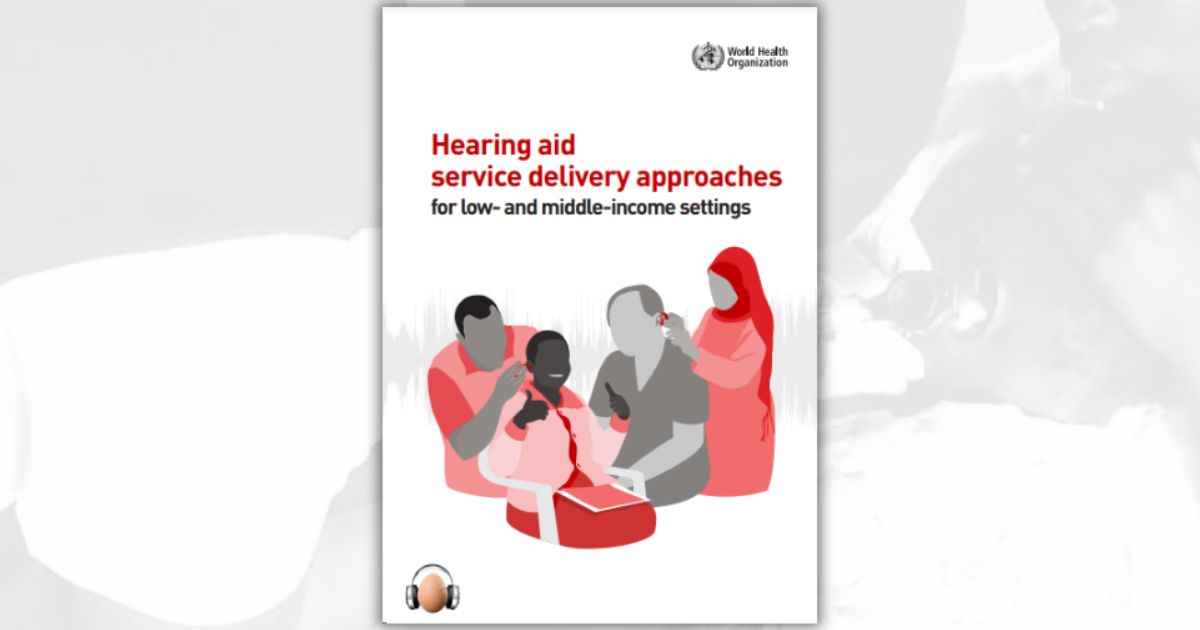GENEVA, SWITZERLAND — In preparation for World Hearing Day on March 3, the World Health Organization (WHO) has unveiled new technical guidance aimed at enhancing hearing aid service delivery approaches in low- and middle-income settings. This comprehensive document aims to offer practical direction to countries lacking sufficient human resources for evaluating hearing, as well as for fitting and maintaining hearing aids.
Developed with support from the ATScale Global Partnership for Assistive Technology, the guidance underscores the principle of task sharing among specialists and trained non-specialists. It delineates two distinct approaches—one tailored for adults and another for children aged 5 and above—and is complemented by resources containing tips for healthy ear care practices, the proper use of hearing aids, and strategies to support individuals living with hearing loss.
Dr. Bente Mikkelsen, WHO Director for the Department for Noncommunicable Diseases, highlighted the global significance of this initiative:
“Over 400 million people with hearing loss could benefit from using hearing devices. However, less than 20% of these needs are fulfilled… Unaddressed hearing loss is a global public health challenge and incurs an estimated cost of over US$ 1 trillion annually. Given the global shortage of ear and hearing care specialists, we have to rethink how we traditionally deliver services.”
The release of this guidance coincides with World Hearing Day, themed “Changing mindsets: Let’s make ear and hearing care a reality for all” in 2024. This theme underscores the importance of dispelling common misconceptions surrounding hearing loss prevalent among the general public and primary health providers.
Lack of Capacity a Critical Challenge
Among the critical challenges identified in ear and hearing care is the lack of health system capacity for integrated ear and hearing care across people’s lifespans. WHO’s service delivery approaches seek to address this challenge by optimizing the role of non-specialists in providing hearing care to bolster capacity.
The second key challenge revolves around misconceptions and stigmatizing attitudes toward hearing loss and ear diseases. Dr. Shelly Chadha, technical lead for ear and hearing care at WHO, emphasized,
“Common myths about hearing loss often prevent people from seeking the services they require, even where these services are available… Any effort to improve hearing care provision through health system strengthening must be accompanied by work to raise awareness within societies and address stigma related to ear and hearing care.”
 To counter these misconceptions, WHO has released information products and resources aimed at raising public awareness. These include a factsheet for health professionals offering a clear rationale and directions for engaging primary-level service providers in hearing care provision.
To counter these misconceptions, WHO has released information products and resources aimed at raising public awareness. These include a factsheet for health professionals offering a clear rationale and directions for engaging primary-level service providers in hearing care provision.
Governments are encouraged to integrate ear and hearing care within primary health care, implement community-based approaches, and lead initiatives to raise awareness and mitigate stigma related to hearing loss. Healthcare providers also have a vital role to play by ensuring they offer due attention and care to people with common ear and hearing problems. Civil society groups, parents, teachers, and physicians can leverage WHO’s awareness materials and community resources to inform individuals about the importance of ear and hearing care.
Read full guidance here:
Source: WHO






